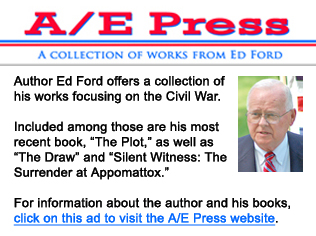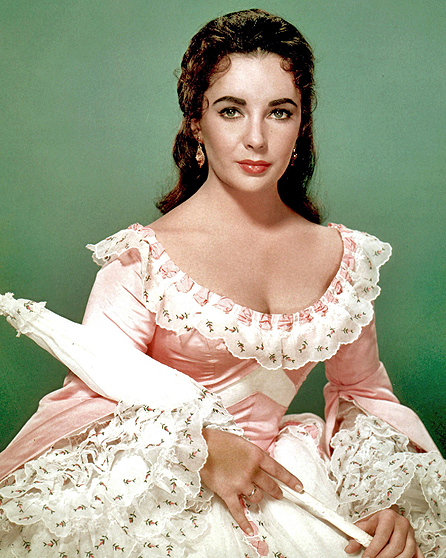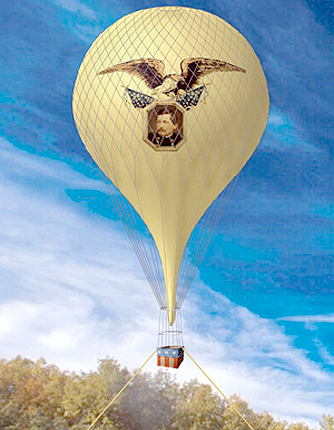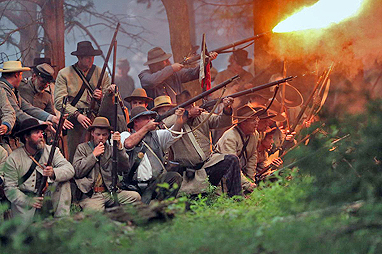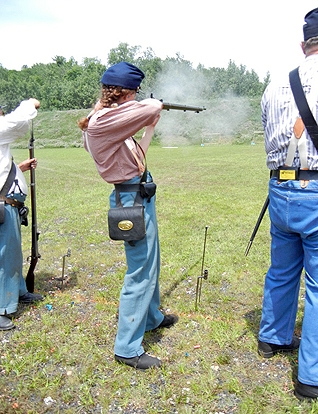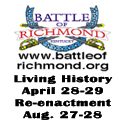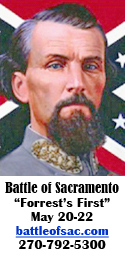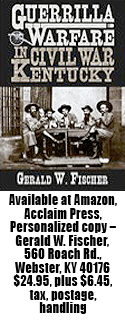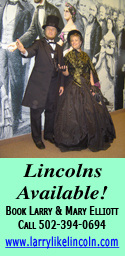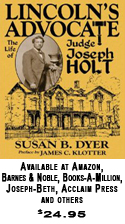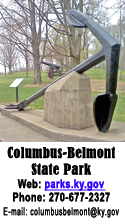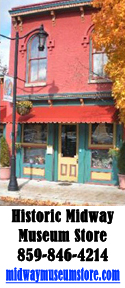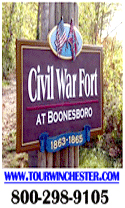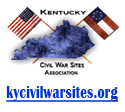|
Night attack
Confederate Civil War re-enactors launch an evening attack during a three-day Battle of Gettysburg re-enactment. Confederate Gen. Robert E. Lee's Army of Northern Virginia was defeated at Gettysburg, considered the turning point in the American Civil War. – John Moore photo
|
Embattled banner
America's most controversial flag may be the least understood. The Confederate Battle Flag never was the South's national Civil War banner and has been so misused that it's fast disappearing from Southern public displays. See story.
|
|
|
|
Magic, memories of ‘Raintree’ began
60 years ago this summer in Danville
In 1956, in what was said to be the greatest Civil War motion picture since “Gone with the Wind,” Hollywood began filming in Danville.
“Raintree County” had a group of A-list actors and no expense was being spared as Metro Goldwyn Mayer studio spent seven years planning what was to be the most expensive domestic motion picture ever made. Some 10,000 miles of locations in 16 states were viewed and considered and, thanks to the efforts of the late Eben Henson (Pioneer Playhouse), Danville was chosen as the key location. More
ACWSA judges your expertise
with Civil War period weapons
How accurate are you with a Civil War firearm?
That’s something the American Civil War Shooting Association (ACWSA) can determine.
The Association, founded in 1999, is dedicated to preserving the history of the American Civil War through the sport of skirmishing. That’s the ACWSA’s name for competitive shooting.
Individuals join teams who represent specific Union and Confederate units, then compete in marksmanship competitions (skirmishes) while wearing replica uniforms. More
Nation’s first air force made more
than 3,000 balloon ascensions
It was the afternoon of June 17, 1861, as a keen-eyed observer surveyed the scene before him, then dictated to a telegraph operator by his side.
“This point of observation commands an extent of country nearly 50 miles in diameter,” he said, and the operator obligingly tapped out his words with the telegraph key.
“The city with its girdle of encampments, presents a superb scene. I have pleasure in sending you this first dispatch ever telegraphed from an aerial station, and in acknowledging indebtedness for your encouragement for the opportunity of demonstrating the availability of the science of aeronautics in the military service of the country.” More
The Battle Flag – a symbol of hate
or one depicting Southern pride?
The Confederate Battle Flag has become a highly divisive symbol in the United States.
Last year, in a national survey across all races, the Battle Flag was viewed by 57 percent of Americans as a symbol of Southern pride. But the remaining 43 percent were of the opinion that the flag represented racism. More
Crittenden watch survived Civil War,
Battle of Little Bighorn, now on display
Union Gen. Thomas L. Crittenden purchased a gold pocket watch in England in April 1850.
Although likely, it cannot be proven that he carried the watch with him throughout his illustrious Civil War career. But, it is known he gave the watch to his young son, John Jordan Crittenden. And, that’s where the story of the watch gets interesting. More
Dyer’s chocolate cakes may be impetus
to save Hardinsburg’s Joseph Holt home
How do you express appreciation to someone who has helped make restoration of a Kentucky Civil War mansion possible?
The answer – bake them a chocolate cake.
Hundreds of chocolate cakes later, Breckinridge County’s Susan Dyer has made a national name for herself. The president of the Friends of the Holt Home, Inc., has provided cakes to community and state leaders, U.S. Army officials and national politicians.
It’s become a delicious way of expressing thanks to all those who are helping make the Hardinsburg home of the nation’s first judge advocate general – Joseph Holt – a bright and shining Commonwealth landmark. More
|
|
|
|
Bugle Briefs ...
KCWSA receives $35,000 grant to study
economic impact of Civil War sites
The Kentucky Civil War Sites Association (KCWSA) has received a $35,000 grant to conduct a statewide study of the economic impact Civil War sites have on the Commonwealth.
The grant is one of 20 for projects approved by the National Park Service and $1.19 million provided to support them. The projects will research, document or interpret dozens of battlefields representing more than 300 years of history.
The Civil War Awards were given to projects in 14 states entailing archeology, mapping, cultural resource survey work, documentation, planning, education and interpretation. The grants are administered by the National Park Service's American Battlefield Protection Program. More
Against all odds, Sarah Blalock
prevailed throughout Civil War
If nothing else, Sarah Melinda Pritchard Blalock was unique.
She fought in the Civil War for both the Union and Confederacy. She disguised herself as a soldier for the South and then as a guerilla fighter and raider for the Union.
Sarah was born in 1839 in Caldwell County, N.C., which is now Avery County, near the base of Grandfather Mountain. She was one of nine children and resided in this section of North Carolina until her death in 1903. More
Kentucky’s Civil War leaders . . .
Abraham Buford, a consummate warrior,
was successful Thoroughbred breeder
(EDITOR’S NOTE: This is the 36th in a series about Kentucky’s officers and battle leaders during the Civil War.)
“Surrender, you damn big Rebel!” the Union major cried as he struck Abraham Buford with his sword.
The Kentucky-born Confederate general replied with a pistol shot that killed his opponent during the Nashville campaign.
A man of great physical size and strength, Abraham Buford was a consummate fighter. Graduating 51st in the West Point class of 1841, the Woodford County native was commissioned into the First Dragoons, where he served for 13 years. He saw duty in the American West and also served with distinction during the Mexican War, eventually rising to the rank of captain. More
State tourism generates $13.7 billion,
but impact of Civil War sites unavailable
In 2015, Kentucky’s tourism industry had its strongest overall economic growth rate since 2005, generating $13.7 billion.
That’s a five percent increase over the previous year.
Tourism supported more than 186,000 jobs, including 6,200 jobs created in 2015. Kentucky tourism generated more than $1.43 billion in taxes, with $184.9 million going directly to local communities.
Unfortunately, the totals do not reflect the impact of the Commonwealth’s Civil War sites. More
Charles Hanson made name at Lebanon,
held in high regard at his death in 1875
Many Civil War readers have heard of Lt. Col. Charles S. Hanson, the 20th Kentucky, and the battle that took place in Lebanon on a hot day in early July 1863.
The Battle of Lebanon did not make the newspapers, as a couple of days earlier, the battles of Gettysburg and Vicksburg took place, which were huge victories and in the East and West for the Union.
Unlike his brother, Confederate Gen. Roger Hanson, Charles cast his lot with the Union and was mustered in at Smithland in January 1862 and named lieutenant colonel of the 20th Kentucky Infantry. The Clark County native took command of the 20th following the fall of Fort Donelson the following month. More
|
|
|
